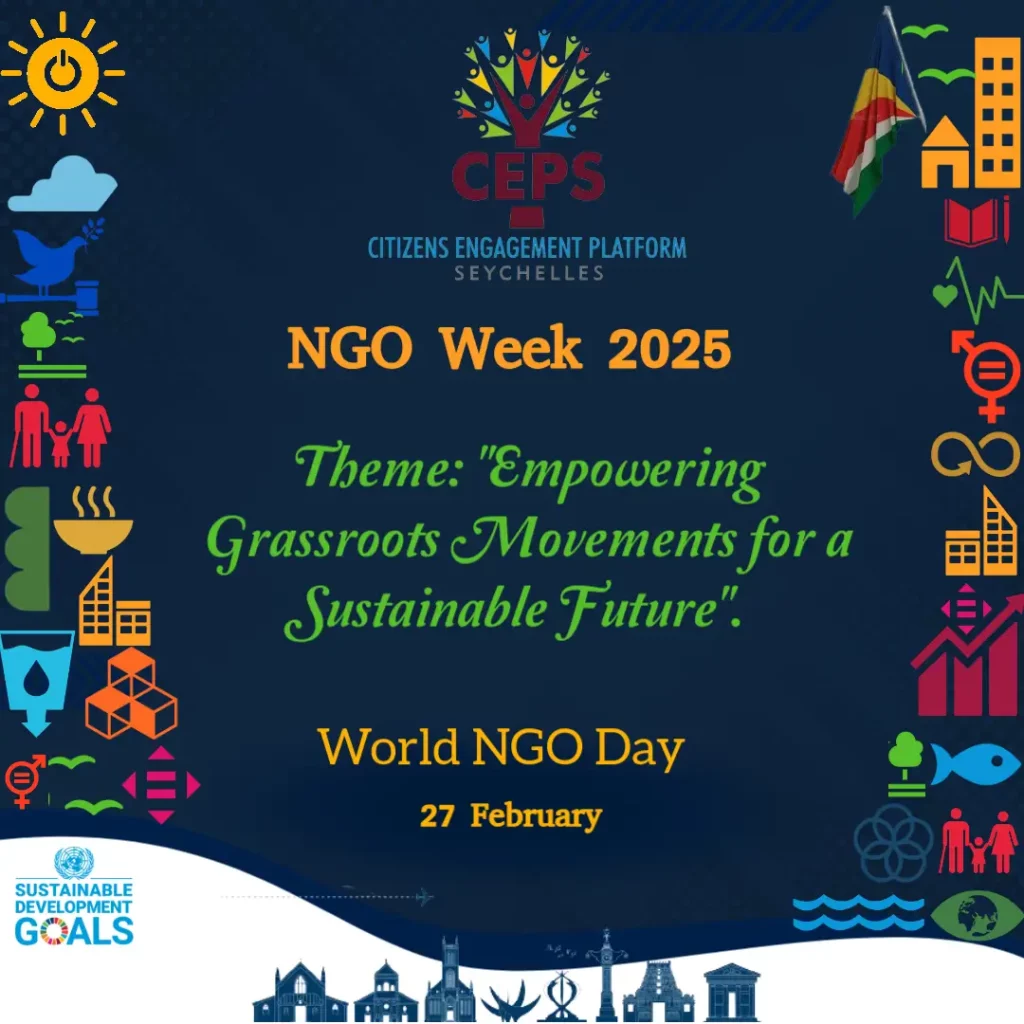Two weeks ago after making enquiries with the department of environment, we were informed that the Anse à la Mouche project has been given the go-ahead. We now learn from sources involved in the project that selected tendering has just been done for the road diversion and works are due to start in October 2020.
As members of NGOs (1) that put forward their concerns and objections to this project during the EIA process of August 2019, through a ‘scoping report’ to the department of environment, we are greatly troubled that none of our reservations and objections have been taken into account. Neither have the objections of the many people who attended the EIA public meeting at the Anse Boileau community centre on Saturday August 24, 2019. Once again, we get the impression that the EIA process is done merely as a procedural formality and the outcomes are generally ignored.
Our stated objections to and main concerns regarding this project are as follows:
This project intends to build a 120-room hotel in the wetland section of Parcel C7983 at Anse à la Mouche, in phase 1. This will involve land-filling for the hotel site – which covers about half of the lower section of the wetland – to 1 ½ metres above the present level in order to protect the buildings and the site from flooding, as explained at the EIA public meeting on August 24, 2019. This is confirmed in the developers’ ‘Anse à la Mouche Mixed-Use Development – WSP/MAD Civil, Infrastructure and Structural (CIS) – Schematic Design Report’ of September 2019, and the only remedy they propose is the building of weirs for the control of water-flow in the wetlands.
Seychelles is a member of the Ramsar Convention on Wetlands since 2005, and we are therefore committed to the principles of the Convention which expects members to facilitate “…the development at national level of policies and actions, including legislation, that help nations to make the best possible use of their wetland resources in their quest for sustainable development” (2).
It must be noted that already, almost 90% of wetlands in the inner islands of Seychelles have been affected by human activities (3), especially large hotel and housing developments. While we have in place a ‘National Wetland Conservation and Management’ policy, which aims to regulate ongoing “ad-hoc reclamation, canalisation, pollution and exploitation of wetland areas”, none of the directives of the policy seem to have been applied to this project.
The ‘Rapid Biodiversity Assessment of Anse à la Mouche’ report (October 2019) (4) commissioned by the Royal Development Company Seychelles Ltd, covers the biodiversity of the Phase 1 area only, an area of 187,321 square metres, of mainly wetlands. This is only 23% of the whole property. The study found that 70% of the vegetation was indigenous native species, with a few patches of endemic palms, which formed part of a secondary forest in the area of the hotel site. A large number of birds, reptiles, insects and crustaceans, rated common to abundant, were also found on the site. While noting “the high conservation value of the zone” (p14 of the report) and the possible direct impacts of the construction of a large hotel on the site (including: loss of terrestrial and micro habitat, loss of forest covers, soil erosion and sedimentation of streams, p14) the report provides very limited solutions other than the inclusion of a “wetland management plan” in the project development.
Parcel C7983 is 813,243 square metres; according to the lease agreement between the Anse à la Mouche Property Development Ltd and the government, the premium charged for the property, leased for ninety nine years at R1 per year, is US $4,500,000. This amounts to R75 per square metre as opposed to the current rate of R1,200 to R1,500 per square metre for land purchases on Mahé. Compared to other developments, for instance Ile Soleil, where the cost of residential and commercial plots range between R1,200 and R2,500 per square metre, the price per unit of Parcel C7983 at Anse à la Mouche makes it one of the most under-valued properties on Mahé.
The project is described as a “mixed-use development” to be done in two phases – the construction of a 120-room four star hotel, along with a retail and residential units. However, according to the lease document signed between the Anse à la Mouche Development Company Ltd and the government, the ‘Phase 2’ part of the project (the retail centre and residential units) will not start until the hotel becomes operational, and even then, the decision will be subject to demand and favourable market conditions – see Clause 6 (4), (a), (b) and (c) of the lease agreement. This suggests that the second phase may only happen in the distant future, if at all. In the context of the scarcity of land in Seychelles, such an agreement is very questionable.
Public access to beaches has become a national issue in Seychelles in view of the fact that tourism establishments built along the shoreline invariably restrict access to the public in one way or another. The leasing of parcel C6626 along the shoreline by the developers will effectively turn this section of the beach into private property. Considering that the owners of this proposed hotel development are the same ones who own the Four Seasons hotel, where residents are constructively discouraged from using the beaches, we do not expect anything different for this section of the Anse à la Mouche beach.
The shoreline vegetation along the beach on parcel C6626 is a thick hedge made up mainly of tall Var (Hibiscus tiliaceus) and Bodanmyen (Terminalia Catappa), both native plants which serve as strong barriers to rising sea levels. Going by other tourism developments at places such as Petite Anse (Four Seasons), Anse Louis (Maia Resort) and Val Mer (Kempinski), where the beach hedges are consistently trimmed or have been removed in sections to enable the visitors to have sea views from their villas, we are concerned that the same practice will happen at Anse à la Mouche.
Many Anse à la Mouche residents expressed strong objections to the road diversion for a number of reasons:
(i) The building of the proposed hotel 30 metres from the shoreline and the consequent diversion of the main road around the back of it will have the effect of dividing the Anse à la Mouche community into two sections, both physically and socially. Many people have close relatives living in the north or south part of the village and daily interactions happen between these areas. The shops and cold stores are used by both communities daily. The hotel is clearly viewed as an intrusion in the life of the village. This was abundantly clear from the strong reactions of people at the public meeting of August 24, 2019 and from comments we have received from many residents, none of which seem to have been taken into account so far.
(ii) The planned diverted road will further encroach on the wetlands – almost all of it is intended to be built through the wetlands according to the plans presented, causing further destruction to sensitive grounds, plants, animals and their habitats.
(iii) While the ‘Traffic Impact Assessment’ report (June 2019) suggests that the road diversion will add barely a few minutes to people’s travel time, it took no account of the many pedestrians who walk that section of road daily, because of the connections between the two communities. The assessment also does not consider the environmental impact of building a section of 785m of main road through a marsh.
8. Anse à la Mouche residents also objected to the appropriation of extensive properties by overseas holding companies, in this instance the UAE-based Albwardy Investment, which also owns the two Four Seasons Hotels (at Petit Anse and Desroches Is) and Mango House at Anse aux Poules Bleues.
In view of the current situation related to the Covid pandemic and the massive reduction in tourism, the question as to whether another large hotel, that will cause considerable damage to the immediate environment where it is being planned and to the surrounding community, is a priority or even desirable at this stage.
Alternative Proposals:
Representatives of the mentioned NGOs and members of the Anse à la Mouche community had made alternative proposals for the use of the property that would better address the needs of the community and the requirements of the Sustainable Development Goals, namely a new concept where the property would be divided into ‘zones’ within which various facilities could be developed, including:
• Space for building homes where the land is divided into residential parcels with appropriate services. The sale of the residential parcels will provide funds for the development of the proposed infrastructure and social amenities listed below.
• Space for the building of small hotels and guest houses.
• Amenities for the care of the young and the elderly: housing for senior citizens and childcare facilities.
• A commercial zone – with shops, restaurants, offices, healthcare facilities (doctor, dentist, pharmacy) and other small businesses.
• A micro-industrial zone offering space for vehicle repairs; small contractors; carpentry workshops; electrical repair workshops etc…
• Green zones along the river courses and the wetlands that must be protected and where necessary, restored, and that could also be used as nature trails and recreational spaces.
• Sports facilities – playing field, courts, social centre, etc… and parking and toilet facilities for the beach.
Considering that Parcel C7983 is 813,243m² – a site that is larger than the whole of Eden Island – it is a most valuable national asset that can easily provide all the needs listed above for the community of Anse à la Mouche and other people in Seychelles. Such a project could also be used as a model for the development of other districts.
Courtesy: Seychelles Nation


